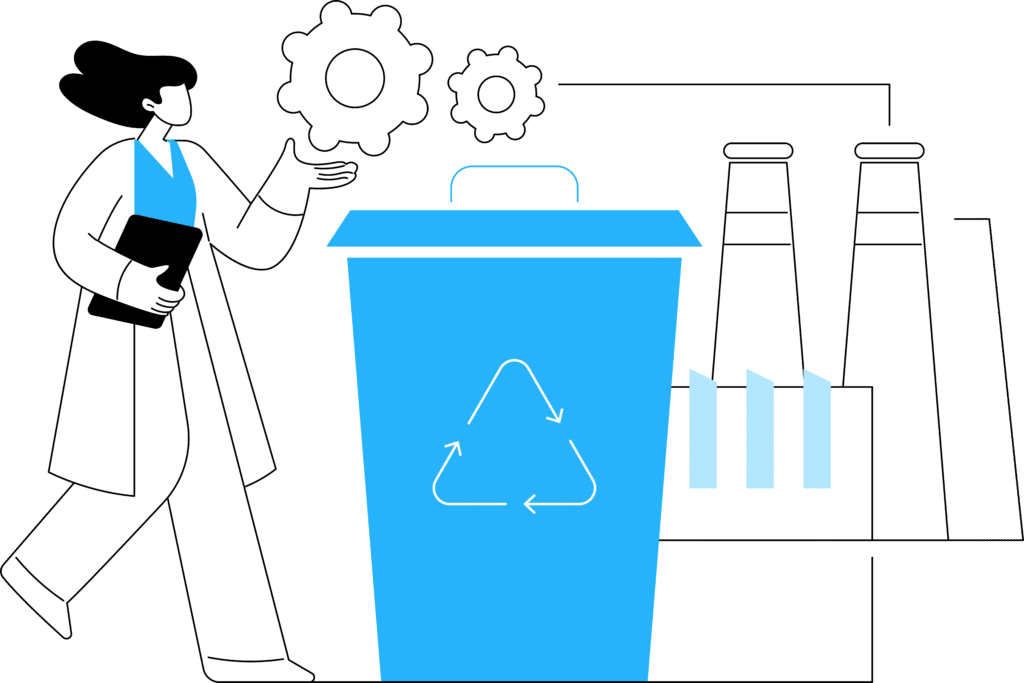In modern society, electronic devices have become an important, even essential, part of day-to-day life. It has become difficult for us to work and relax without using electronic devices such as laptops, smartphones, TV, etc. Each year, the total amount of electronic equipment the world uses grows by about 2.5 million tons. However, our love and insatiable demand for electronic devices create a downside: massive volumes of e-waste from old, outdated products.
The reliability of cross-border e-waste transportation is a key challenge for transporters and recycling companies ensuring sustainable logistics chains. Read on to find out more about electronic waste, its recycling, and the challenges of transporting e-waste.
What is e-waste?
E-waste refers to electronic products nearing the end of their useful life. Common items include computers, TVs, VCRs, stereos, copiers, and fax machines.
Currently, the global electronic waste mountain amounts to approximately 44.7 metric tons. In 2019 alone, the world generated 53.6 million tons of e-waste. That’s about 7.3 kilograms per person and equivalent in weight to 350 cruise ships. Most of this massive e-waste comprises small electronic equipment (mainly household appliances), followed by large equipment (fridges, machinery), temperature exchange equipment, screens, small IT products, and lamps.
The current practice of e-waste recycling
The majority of so-called electronic waste is not yet part of a sustainable reprocessing cycle.
Instead, it fills landfills or is scavenged for rare metals under inhumane conditions, often using toxic chemicals and child labor. Irresponsibly discarded electronics can pollute habitats and harm people and wildlife.
At present, only about 18 percent is being formally collected and recycled. Europe has the highest e-waste recycling rate, followed by Asia, the Americas, and Oceania. Africa has by far the lowest one. Without a reliable, controlled electronic waste management system, toxic substances in discarded electronics (mercury, flame retardants, CFCs) cause serious environmental pollution and health risks. E-waste can contribute to global warming, especially because of temperature exchange equipment (fridges, freezers, ACs, heat pumps). These products release greenhouse gases when dumped and broken down.
The aforementioned information on the global electronic waste situation paints a pretty bleak picture. Luckily, there is also a silver lining. Many of the products that seem to be destined to end up in the global electronic waste landfills can actually be reused, refurbished, or recycled. Thankfully, the world is slowly beginning to realize this. A growing number of countries either have a policy for managing e-waste or are putting regulatory frameworks in place to tackle the problem. We also see that a number of big tech companies, Apple, Google, and Samsung being prime examples, have recently set ambitious targets for recycling electronic devices.

The challenges of transporting electronic waste
The reliability of cross-border e-waste transportation is a key challenge for transporters and recycling companies aiming for sustainable logistics.
Transporting hazardous waste internationally is complicated as it has to comply with different rules and regulations. Not every country uses the same classifications when it comes to defining e-waste. Furthermore, countries often have different import and export restrictions. There are usually two parties involved in the transport of e-waste:
- Companies that need to comply;
- Government agencies that want to make sure everybody in their territories complies with their regulations.
The solution: systems for tracking and classifying hazardous waste
So, what is the key to properly dealing with e-waste and remaining compliant with regional and country-specific import, export and trade regulations? The solution is a system that can track and classify e-waste and has the ability to provide real-time information about the country-specific regulations regarding the import and export of discarded electronic equipment.
A good example of such technology is software that creates machine-readable representations and knowledge graphs of all the rules and regulations regarding the transportation, import, and export of e-waste. The algorithms should also support e-waste classification per country and check this data against all restrictions and regulations from authorized parties.
The solution should also identify the best possible routes, as well as give all parties the certainty that the transboundary movement of e-waste is allowed or not. This allows companies to identify potential transport countries and the most reliable transportation options and routes.
Conclusion
Limiting and properly discarding electronic waste is still a daunting challenge. The amount of electronic goods being thrown away is staggering, whilst the regulatory framework for transporting e-waste is complex. However, the right tracking, trade and transport compliance tools, along with better recycling practices, can lighten the electronic waste burden on transporters, governmental organizations and the environment.
1. https://globalewaste.org/news/surge-global-waste/









